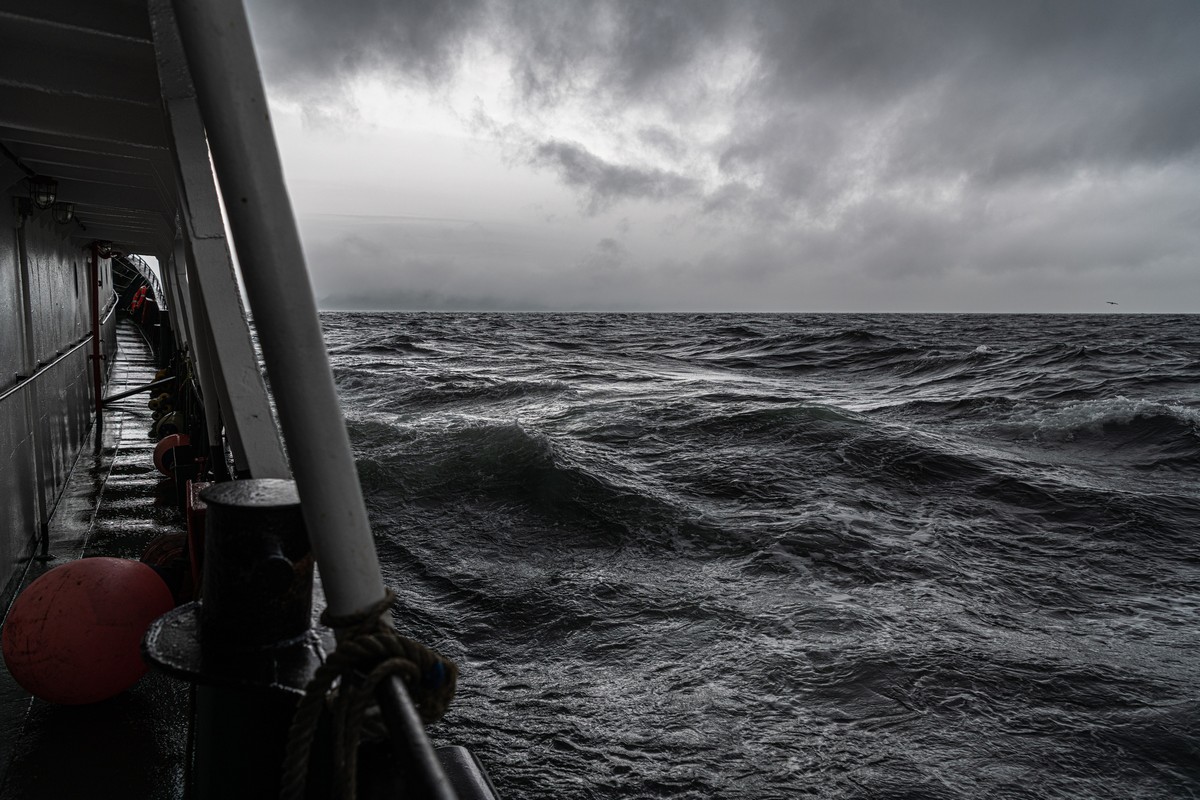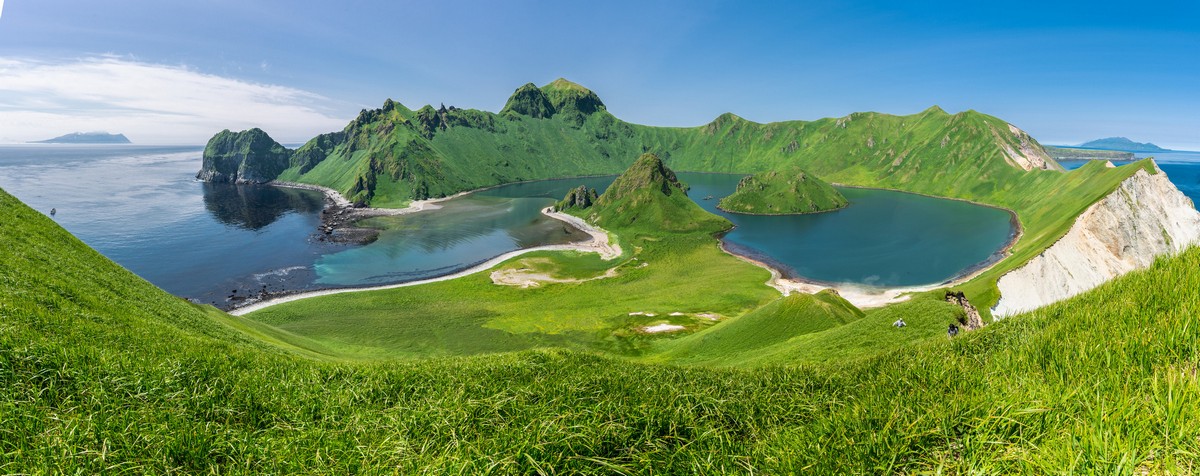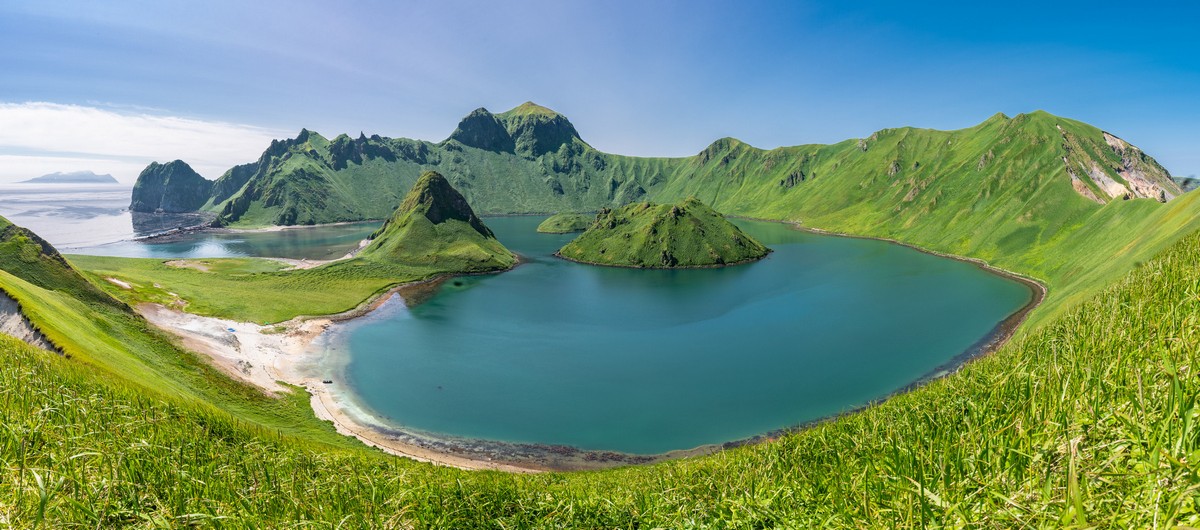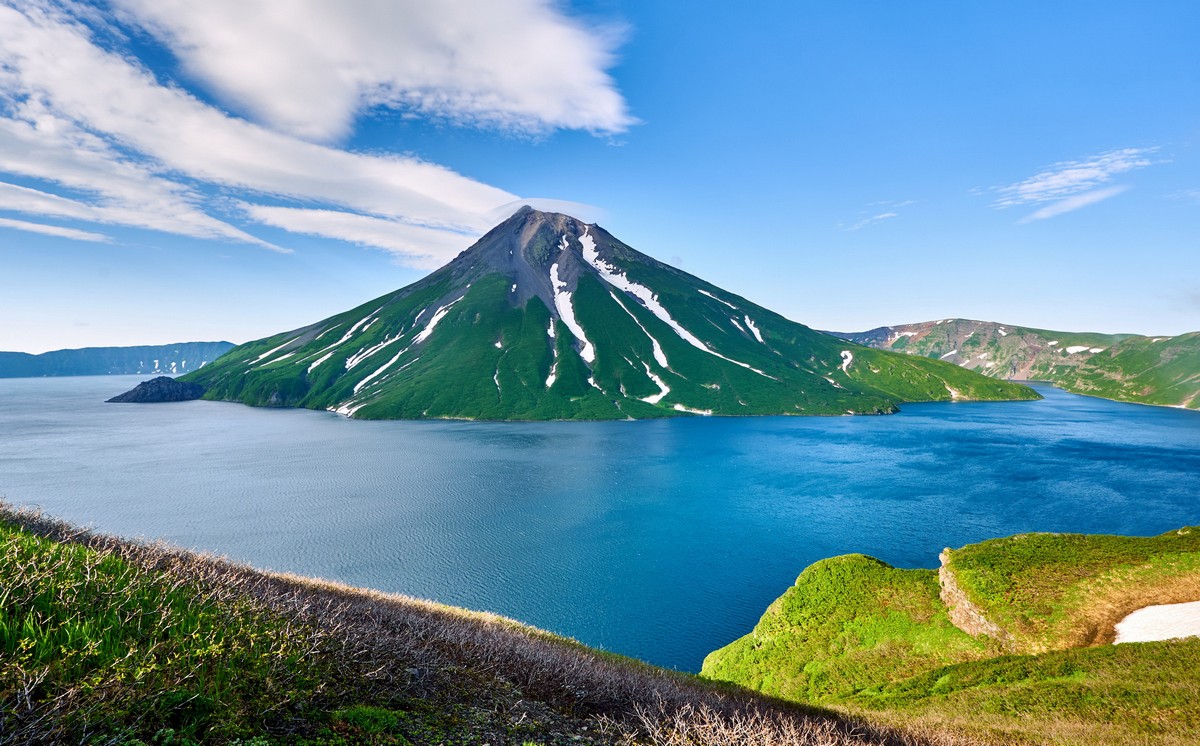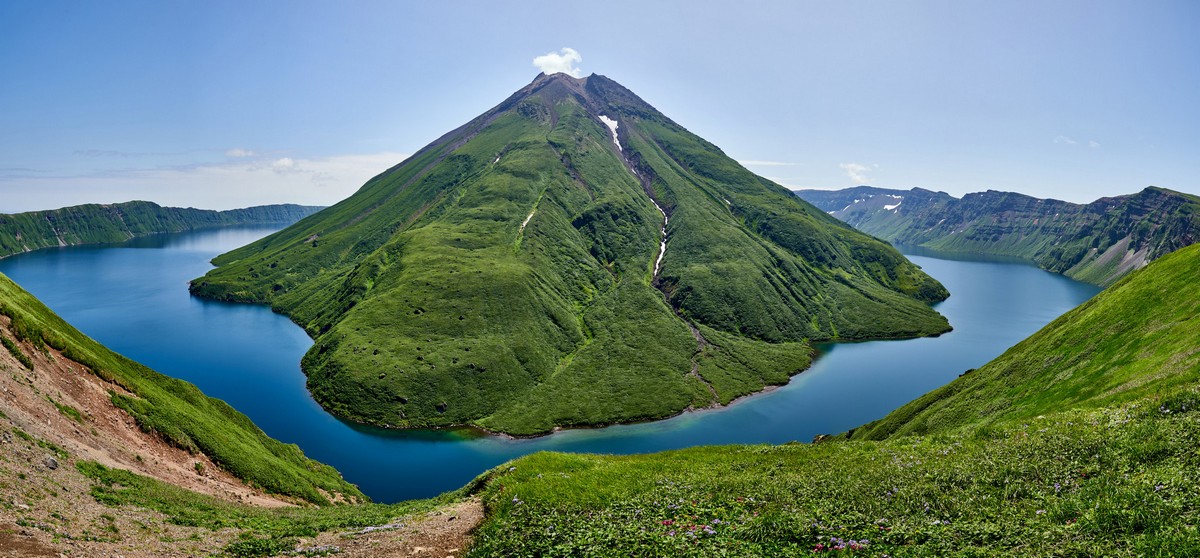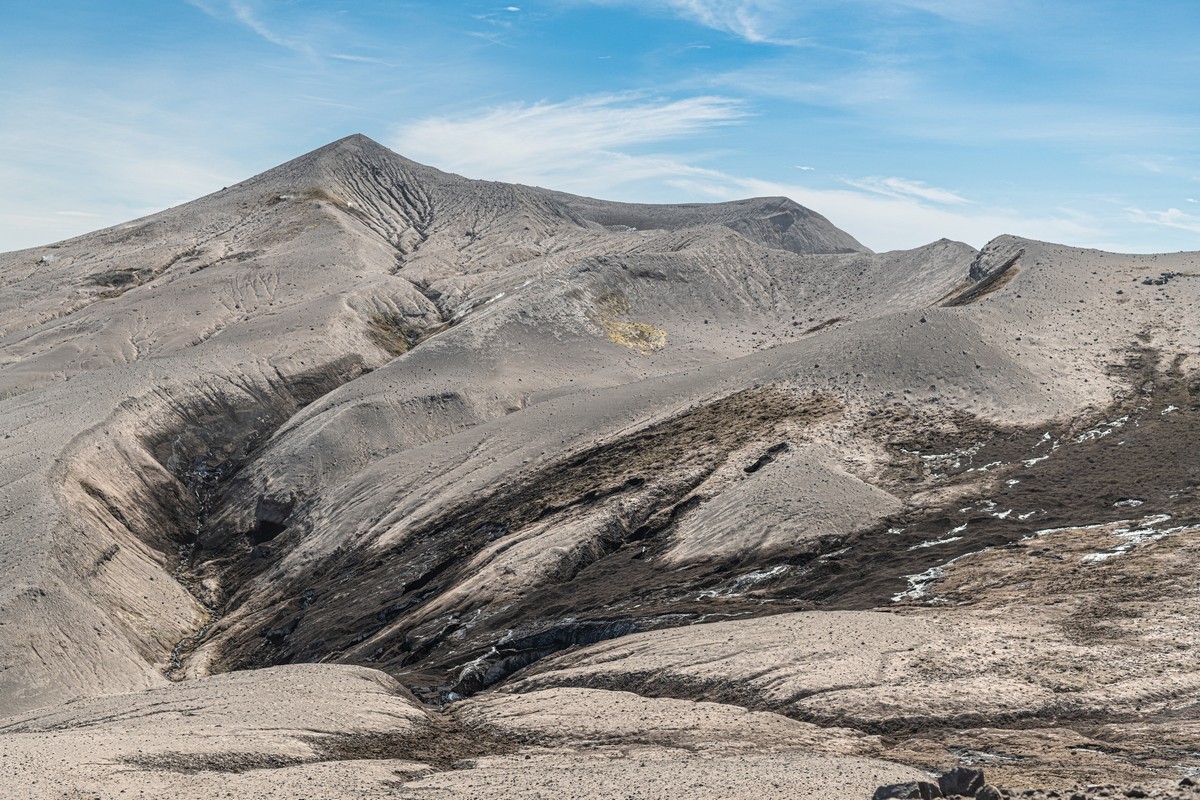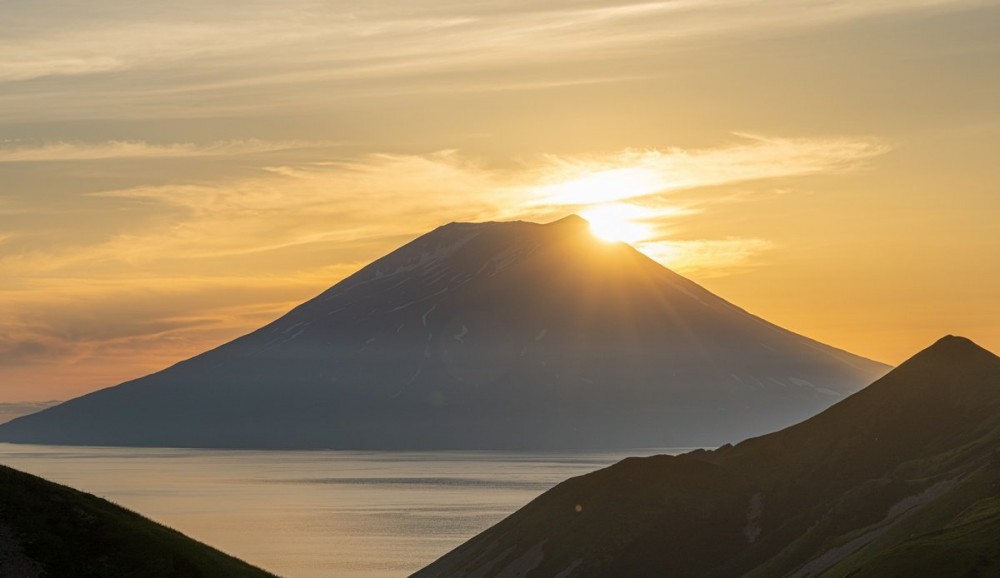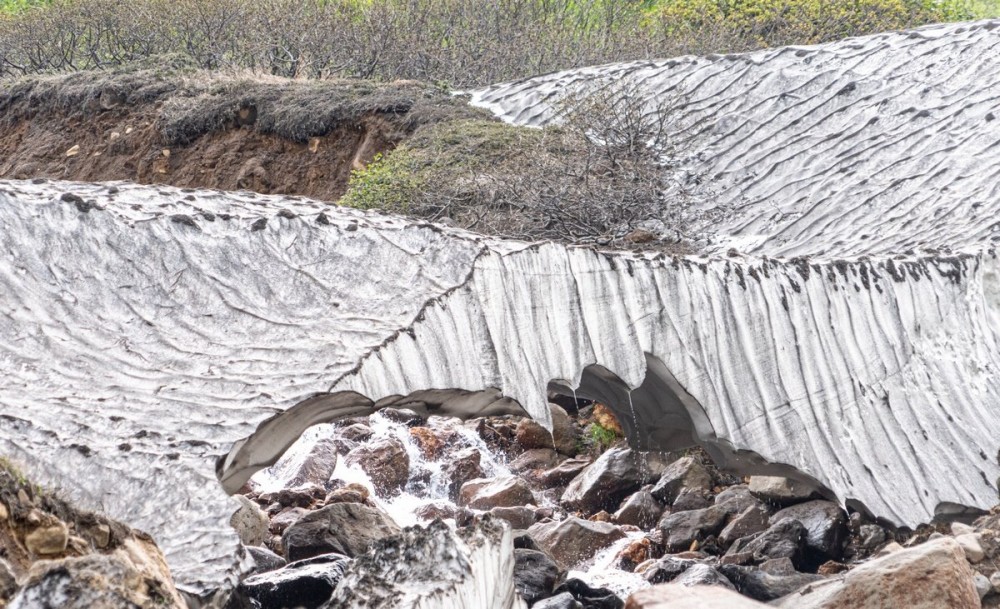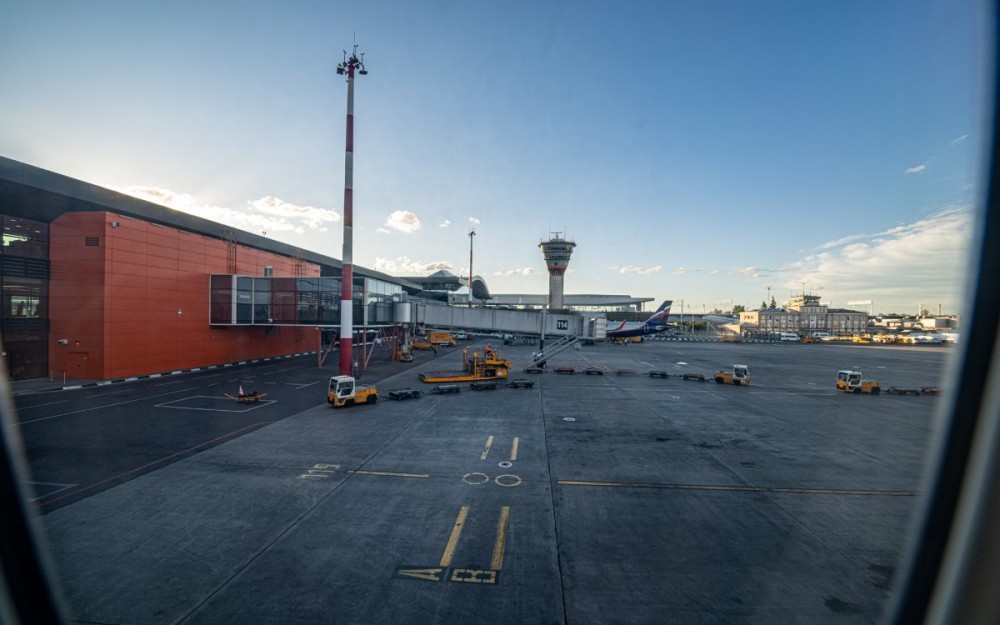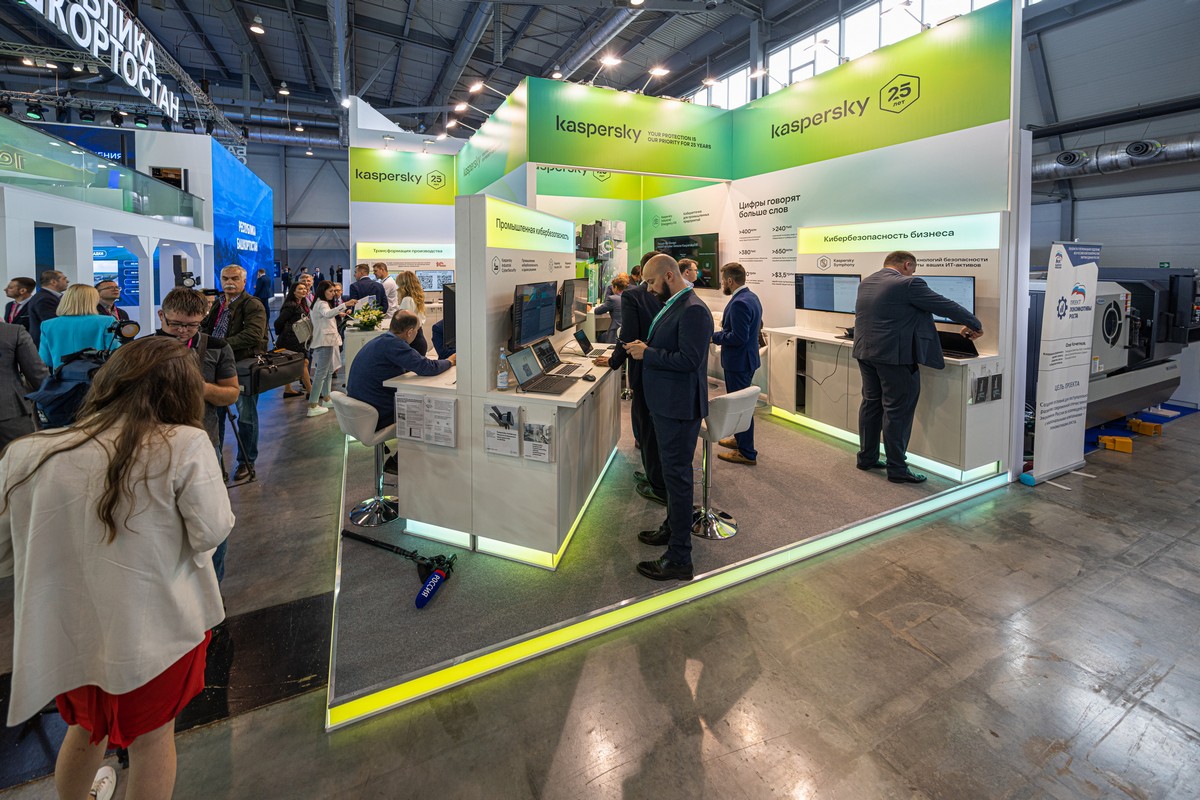Hi folks!
As per a tradition begun many, many years ago, after returning from my latest lengthy expedition in a distant land, heading your way, dear readers, always comes the mandatory post-expedition write-up: a multi-blogpost series with my travelogue-tales, photos, videos, and also commentary of my fellow expeditioners.
Sometimes these blogpost-series last for weeks, made up of several if not more than a dozen posts full of lengthy texts and gigabytes of pics & vids; an example of one such series was the one on our relatively recent Magadan–Yakutsk–Baikal road-trip early in 2022. Other times they’re shorter, pint-sized series, like the one on our Kamchatka-2018 expedition – cut short (at least for me) by my breaking a leg and having to be flown back home early with said leg in plaster.
So what was it going to be this year for our Kurils-2022 expedition – short-and-sweet or lengthy-and-meandering?…
In the planning stages before the trip, we sure were banking on the latter. We prepared for mind-bogglingly heroic extreme-travel feats, and since we wanted to record all such feats we packed into our backpacks all manner of photo-video-droneo tech plus kilograms of rechargeable batteries. We’d also scheduled several days, just in case, to be waiting days; that is – days on which we were to wait for better weather before the latest ascent up this or that volcano. And all in order to be able to take such photographic masterpieces as the following ->
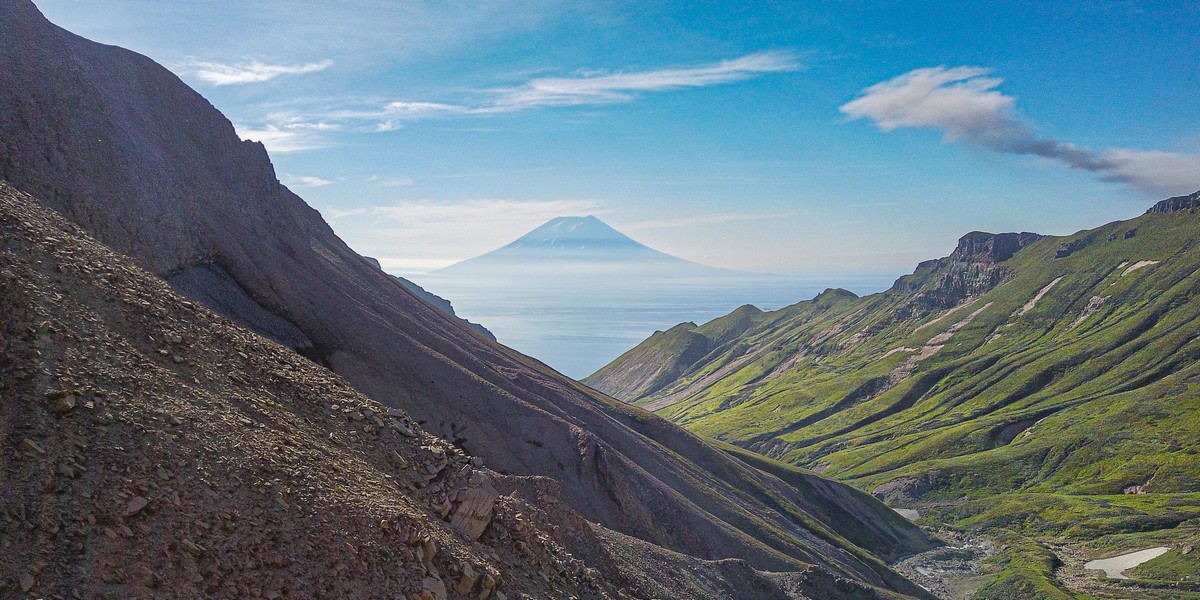
Like I say though – that was the plan. Alas – the above pic turned out to be taken on the first and… second-to-last sunny day of the whole trip! All the other days on our three-week expedition were foggy and murky and miserable, good sunsets or sunrises were few and far between, and glimpses of blue sky lasted mere minutes. In summary: days – ~21; sunny days – 0!

Real sun we only saw – get this – at our final stop on our journey, which isn’t even in the Kurils but on the mainland – the city of Khabarovsk. But I’ll get to that later; here I want to list the three main goals I’d set myself for this expedition:
Like I say, those were the main three. An additional bonus track was to finally check out the Shantar Islands, which I’d been wanting to do for years. All the other stops along the way I treated as mere side-dishes to the main courses, and/or as downtime-days for sitting out rainy days.
Alas – not a single one (NOT ONE!) of my goals was met. And at one point, at the end of the expedition, thoroughly disappointed and apathetic, I thought for a moment that I’d have nothing to report/show whatsoever in my write-up. But then I calmed down, mulled things over more level-headedly, and realized there were still quite a few Kuriliously interesting tales to be told from this year’s expedition, albeit not the sun-kissed, ecstatic ones I’d hoped for. And I’d be able to add recollections from previous trips when embellishment was needed; after all, I’ve been here a full three times already – this being Kurils-expedition #4.
Alrighty. Time to begin. Despite there being practically no sun for the full three weeks, we still took plenty of photos. Like these ->
I could understand if you’re somewhat surprised by such beautiful scenes after I’ve just been running down the weather and the whole expedition. So let me explain…
The Kuril Islands (as the logical continuation of the mainland-peninsula Kamchatka) are such magnificent masterpieces of natural beauty that they reign supreme over most all other magnificent natural locations (e.g., those in my Top-100) by a long way (perhaps save for New Zealand). All other natural wonders of the world are either smaller or in some other way inferior.
All of which goes to say that, even given the rainiest, most miserable weather imaginable (with the clouds a mere 100 meters up in the sky), and even when poor tourists are only shown coastal areas (not the full magnificence further inland), the Kurils still come out top. The weather was bad, for example, the first time I visited, in 2014, but I was still amazed by the low-altitude volcanic vistas viewable from the shores. However, today, I know just how enhanced those volcanic vistas become given weather good enough to permit forays inland (and normally upward – up the side of a volcano). Take away the “gray ceiling”, and there, up above, the views are world-beatingly mind-blowingly OMG. But more about that later. For now – some “comparative Kurilian meditativity”! ->

The top of Ebeko, puffing away:
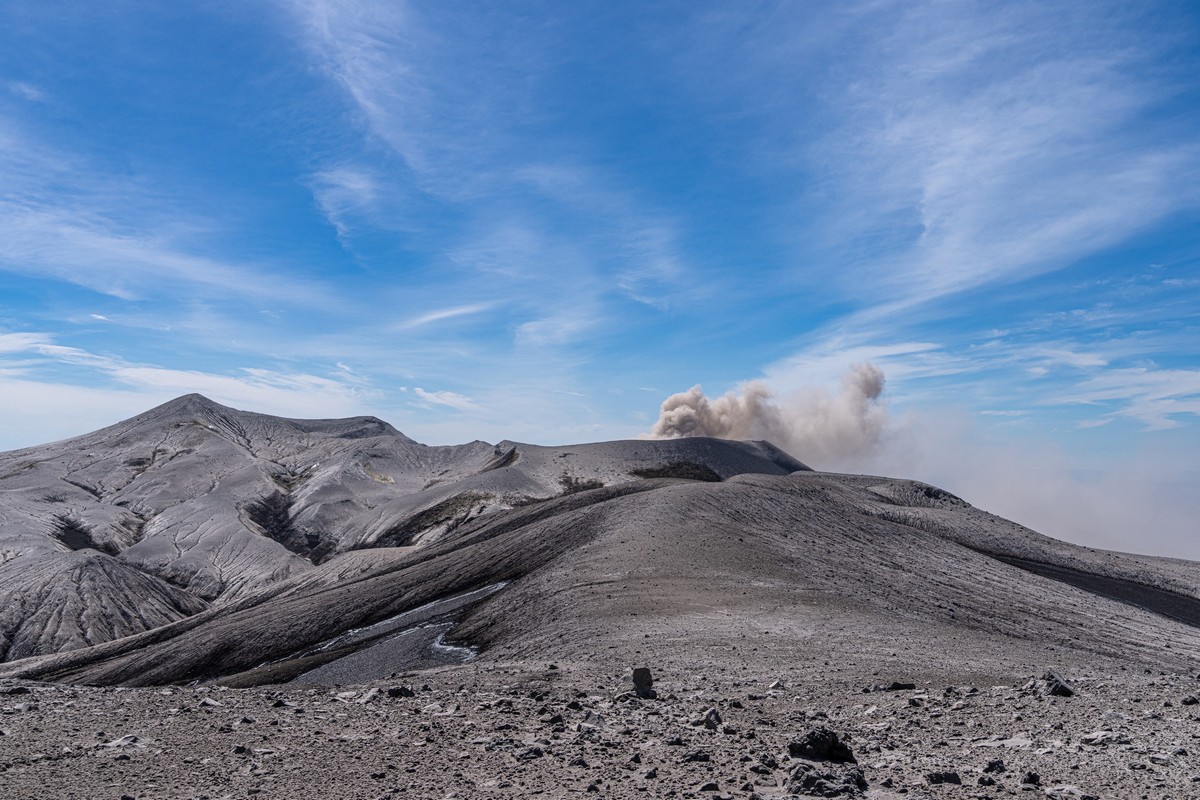
Warm streams warm up the snow to form tunnels and arches:
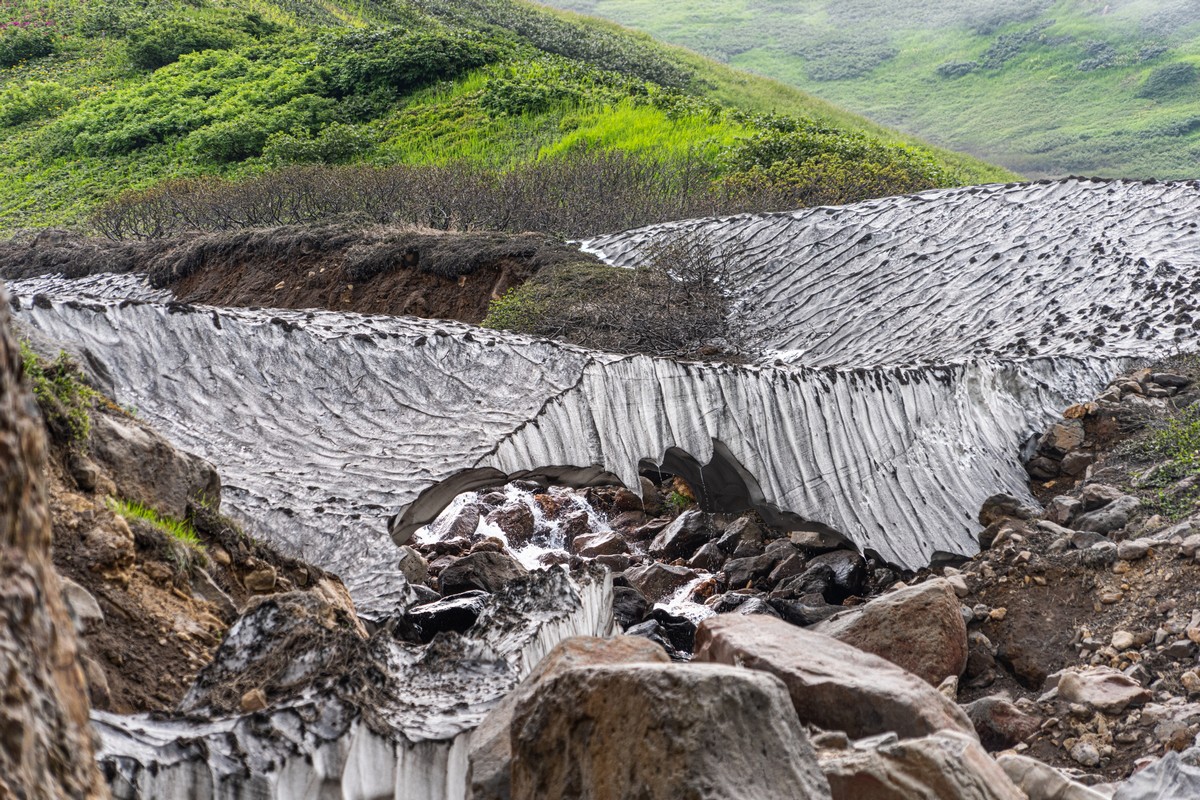
Every cloud has a silver lining – and in the Kurils they also come with rainbows! Still, I’d trade those for clear, sunny skies any day…
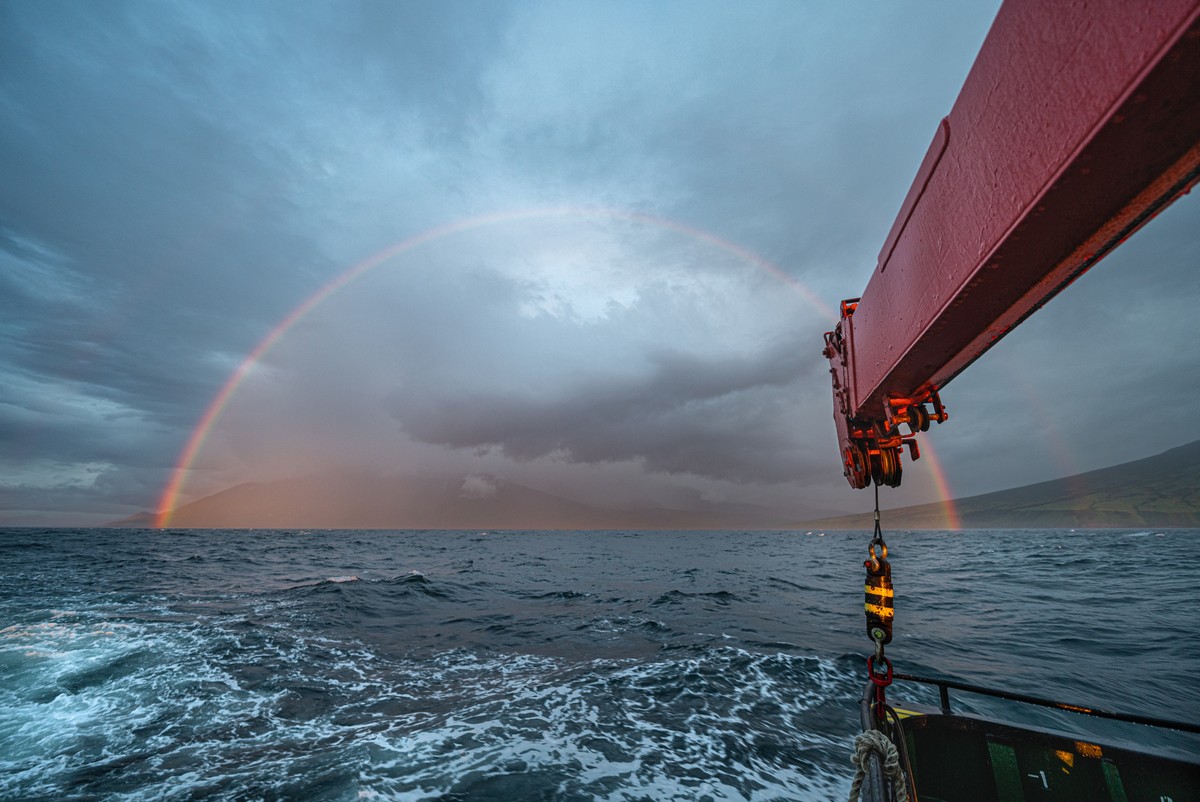
Volcanic coastal areas…
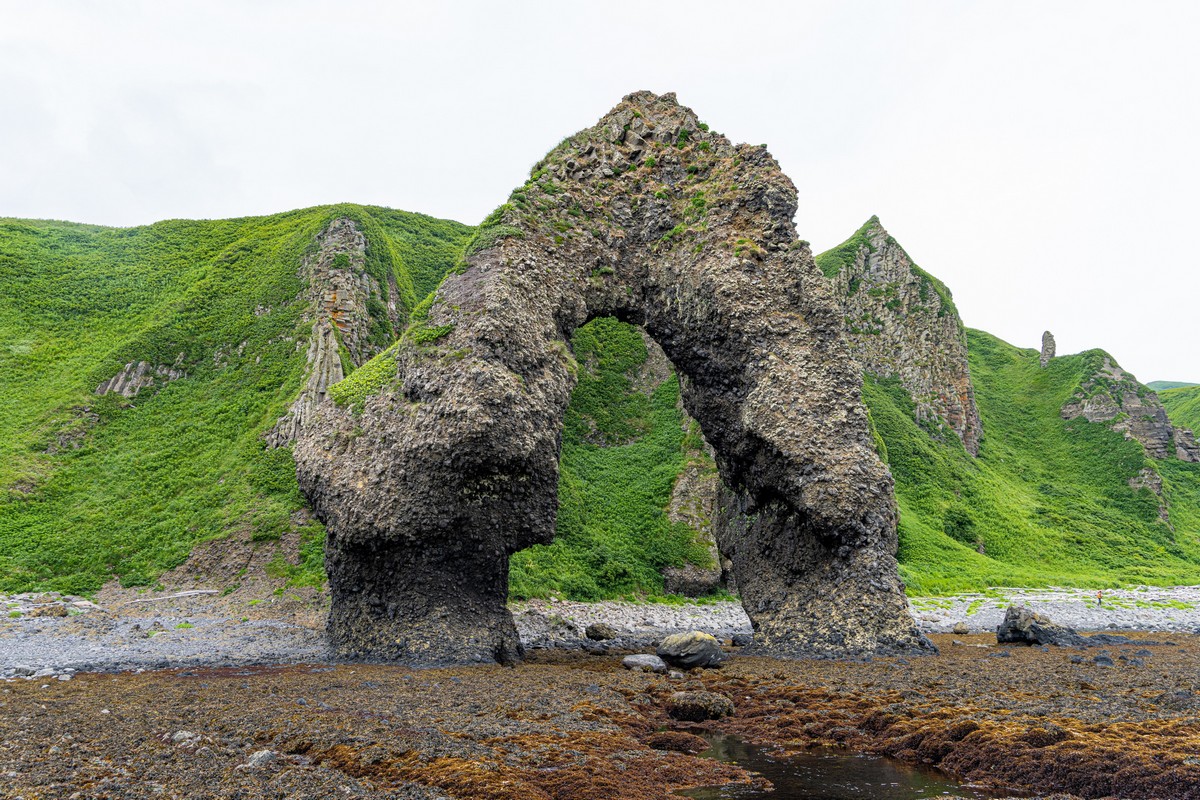
Krenitsyn volcano. And we made it up to the top this time ->
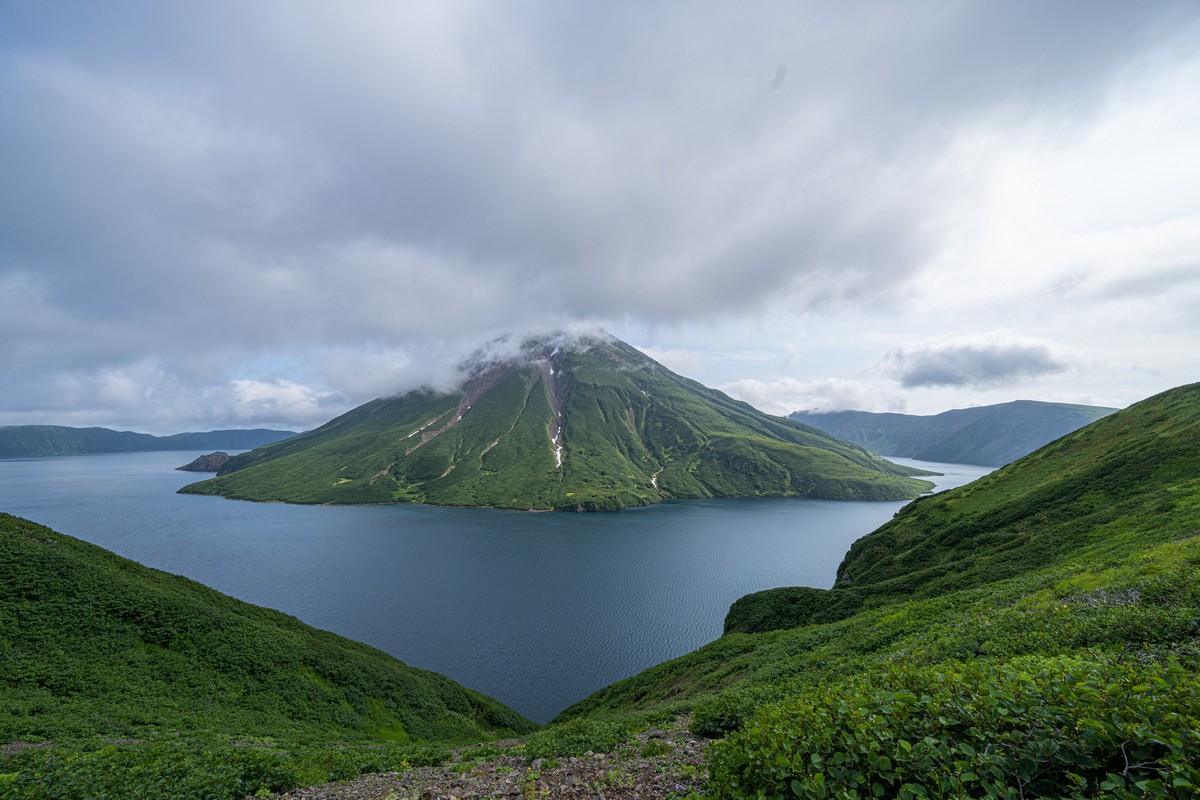
Sunset on Alaid volcano on Atlasov Island:
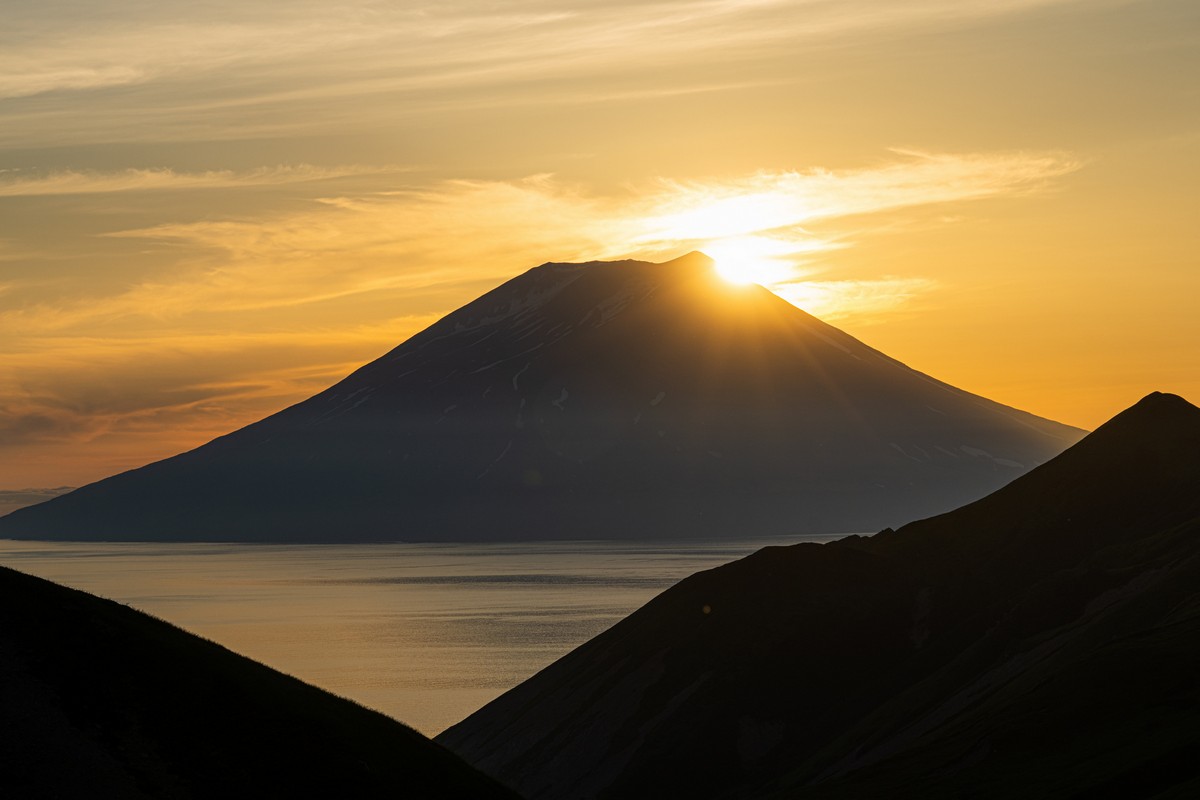
And here’s Alaid (Alla-eed) on a different day from the other side:
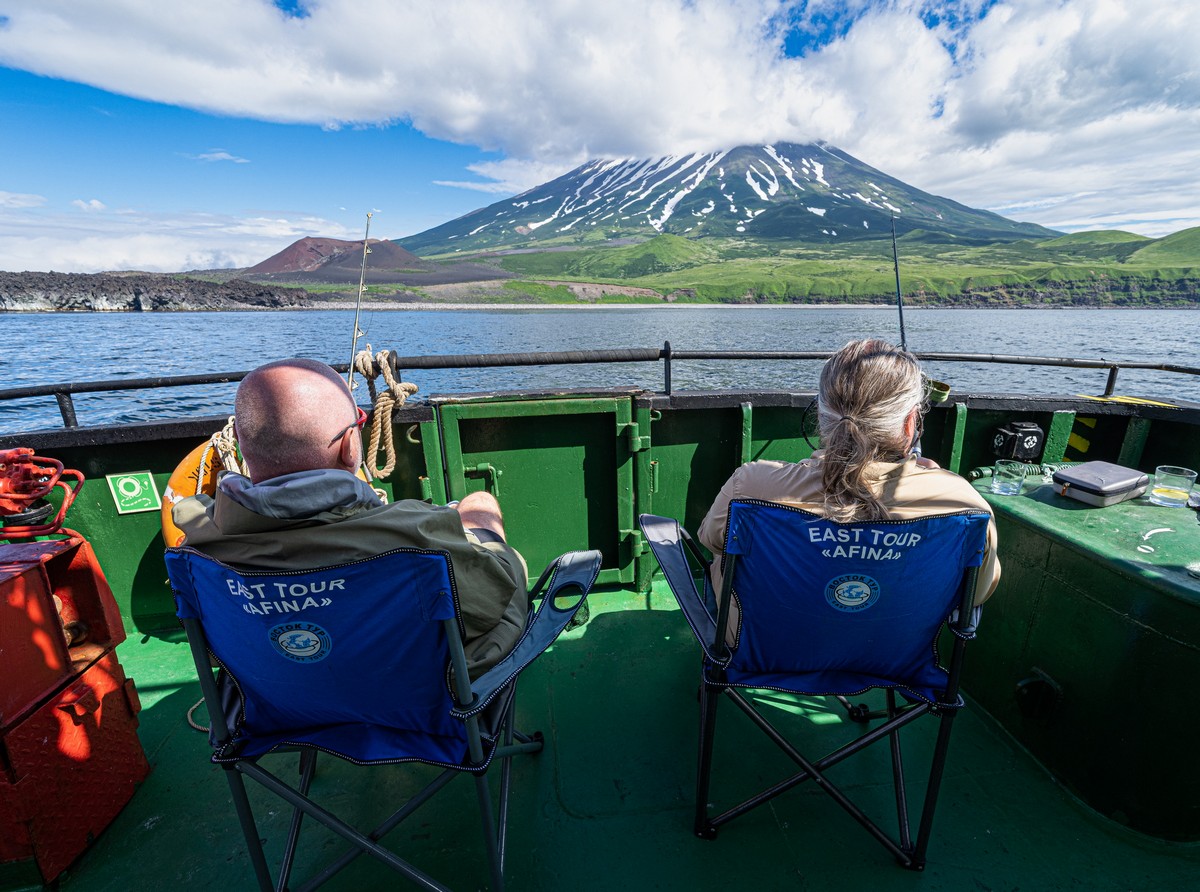
One of the few brief glimpses of the sun:

Tundra on the 49th parallel! (Paris; most of the U.S.A.-Canada border…). The climate here – weird. Ah, yes – it’s 200 meters above sea-level.
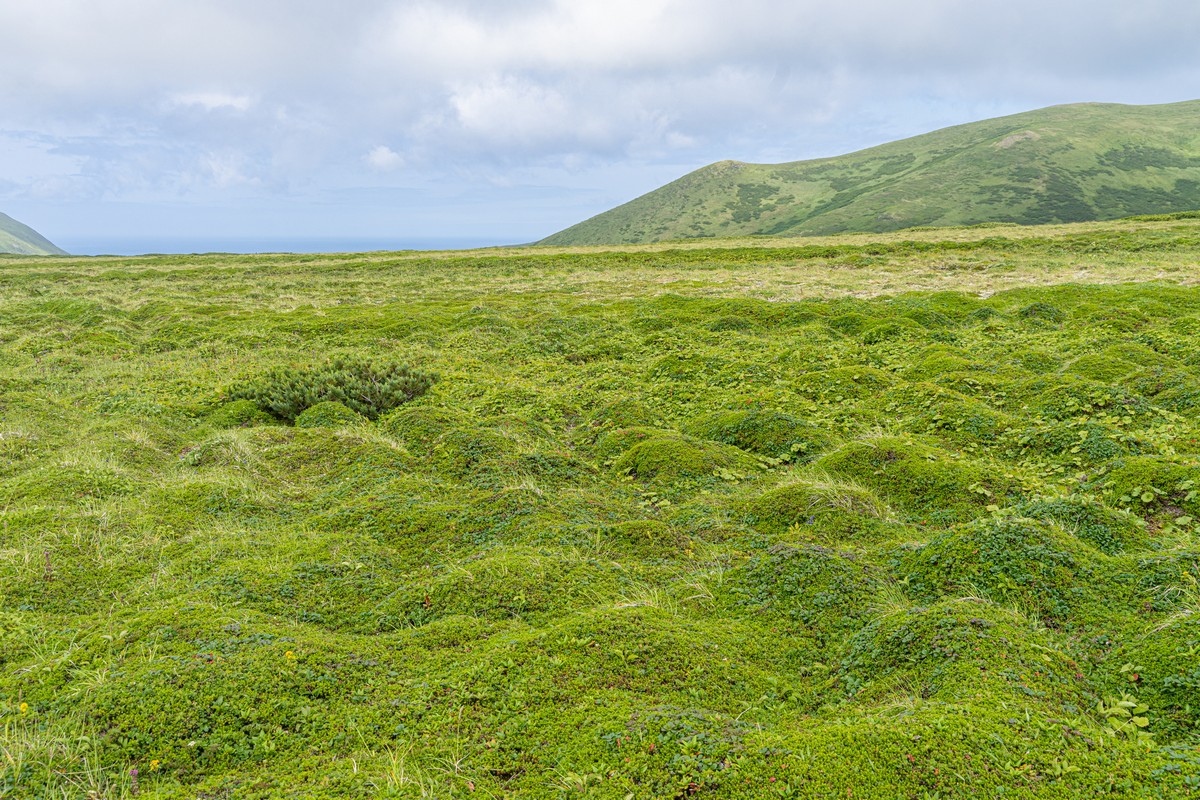
Greener and neater “lawns” than at the best golf courses of the world! ->
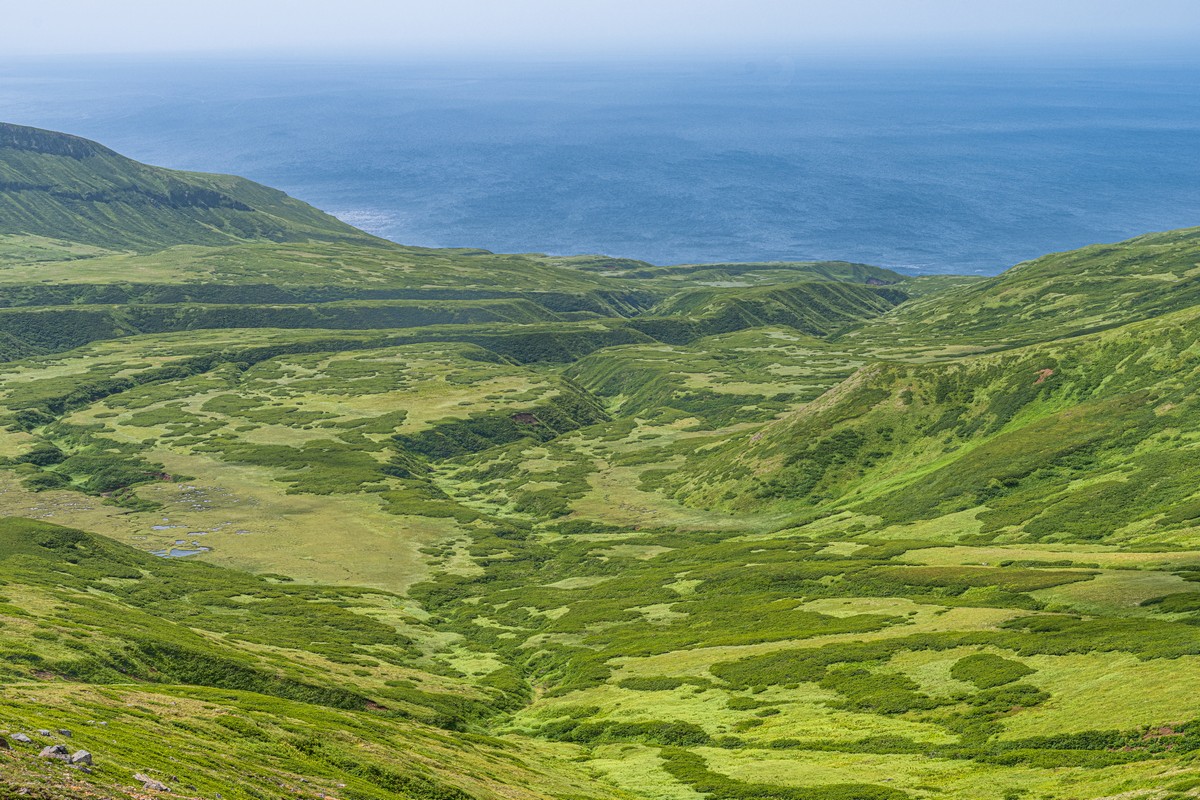
Volcano Ebeko – there she blows! ->
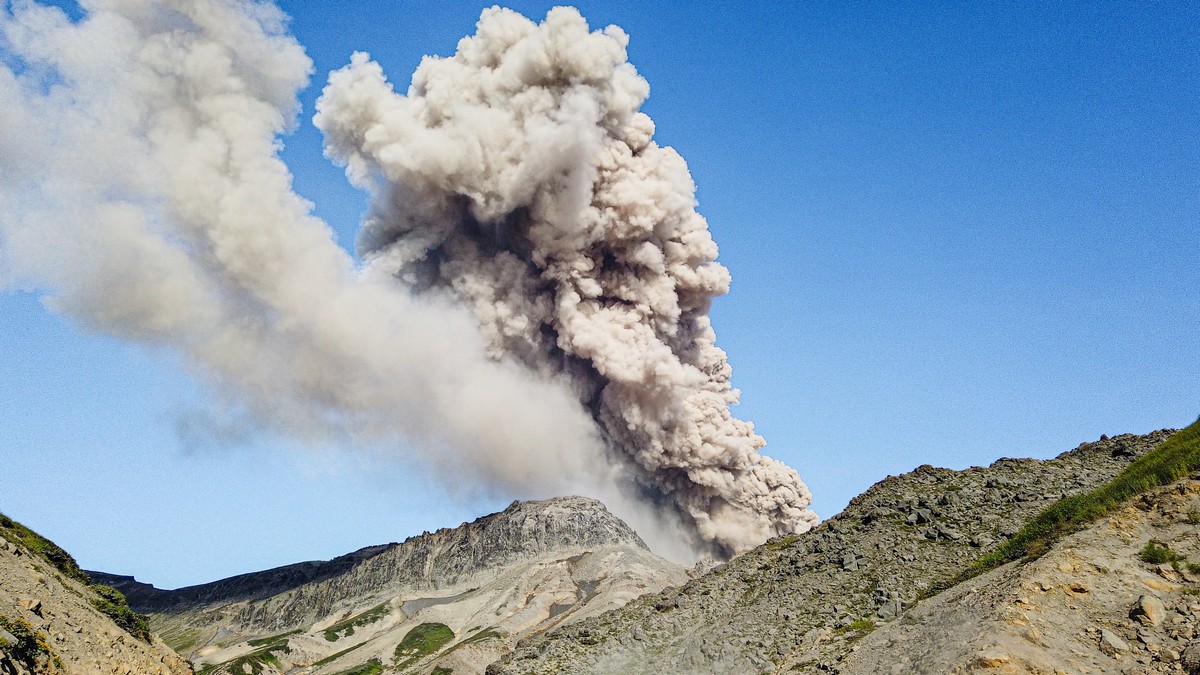
The view from Ebeko of Alaid and the Yurevka river. Top-right: a fresh emission of ash from Ebeko.
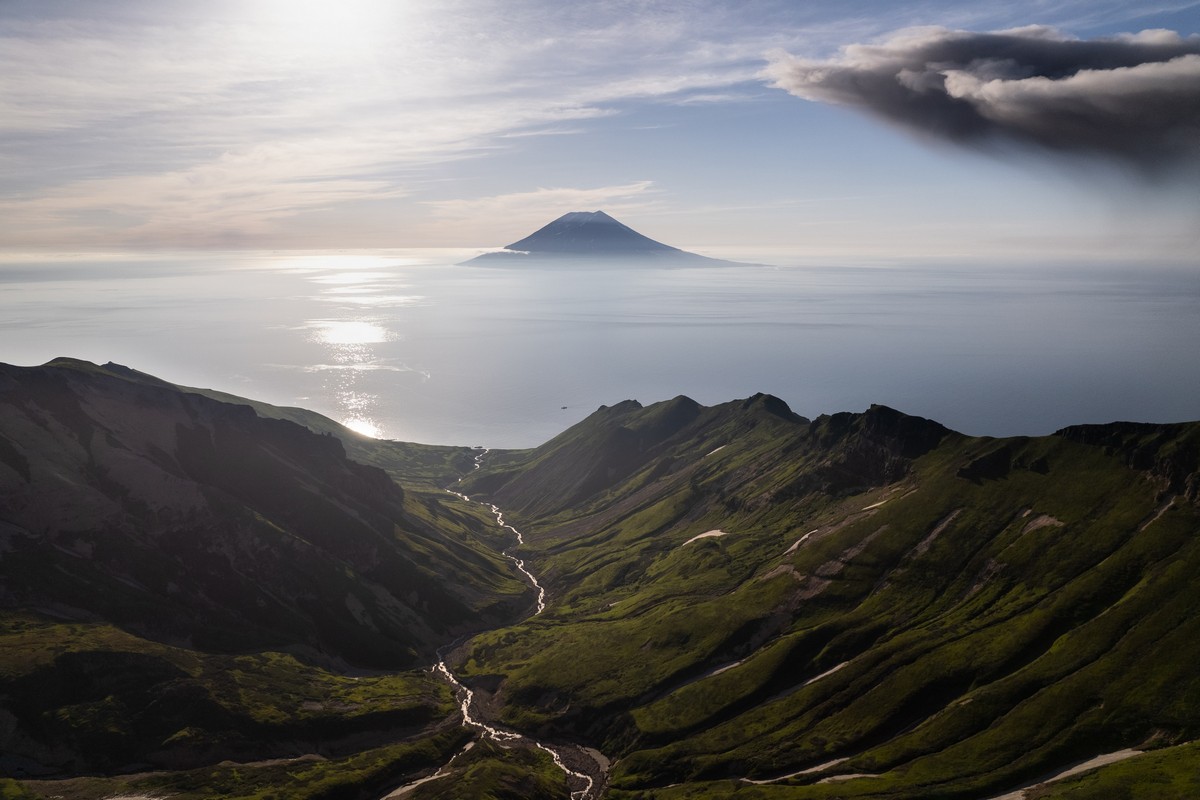
Ebeko ash landscapes:
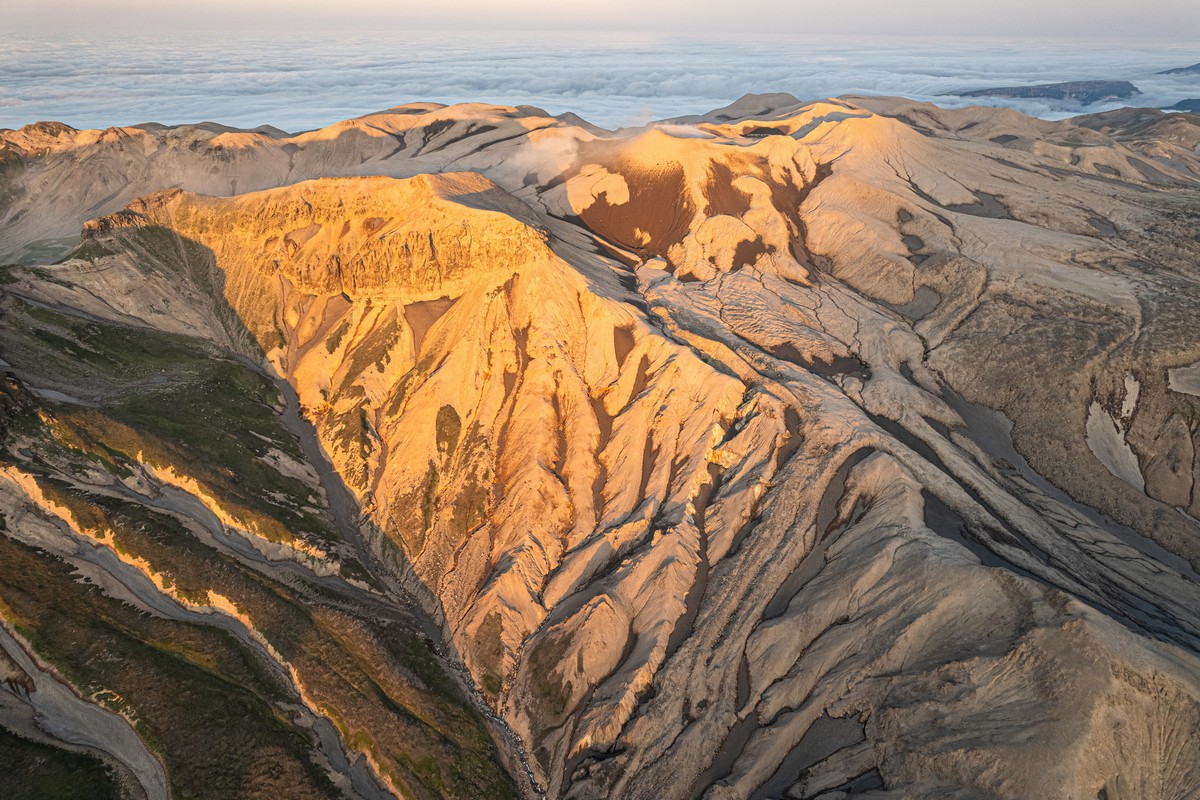
The Olympic Fissure on Atlasov Island, and the “Side” (“False”) crater of Alaid volcano:

Olympic Fissure and “Papa” together:
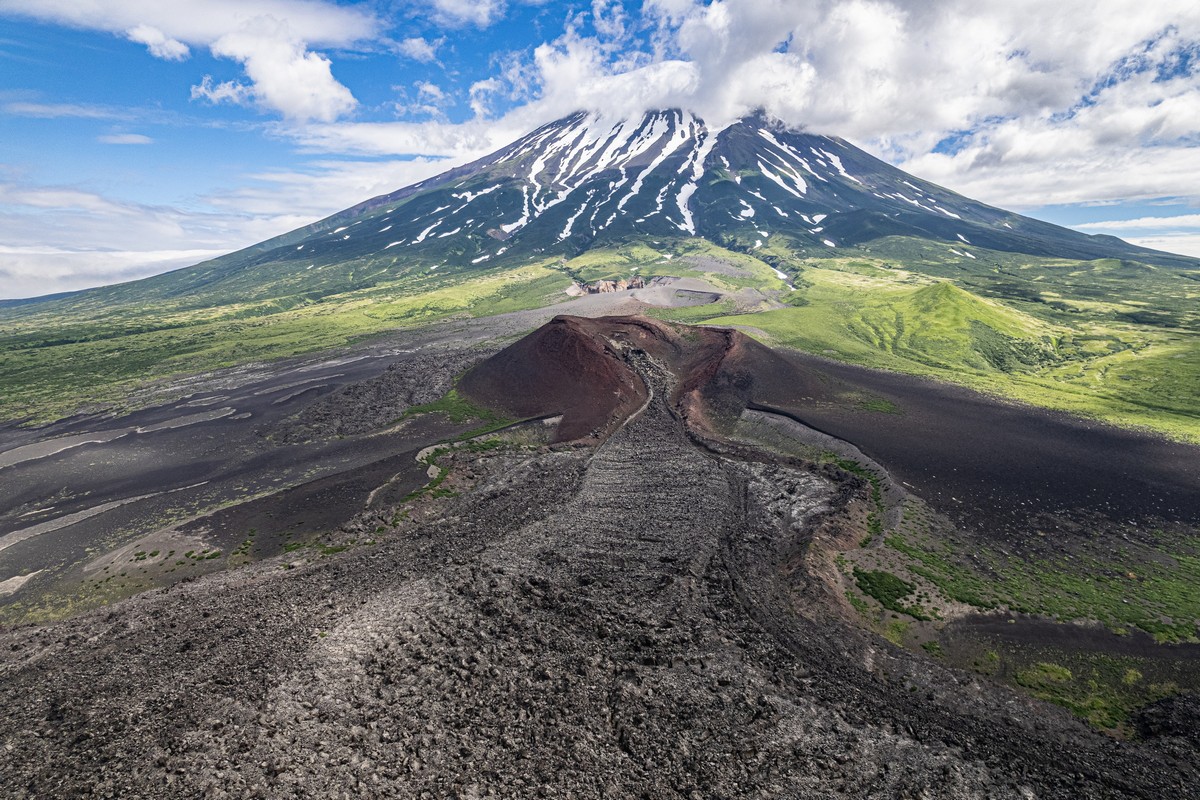
Cape Lopatka – the southernmost point of Kamchatka:
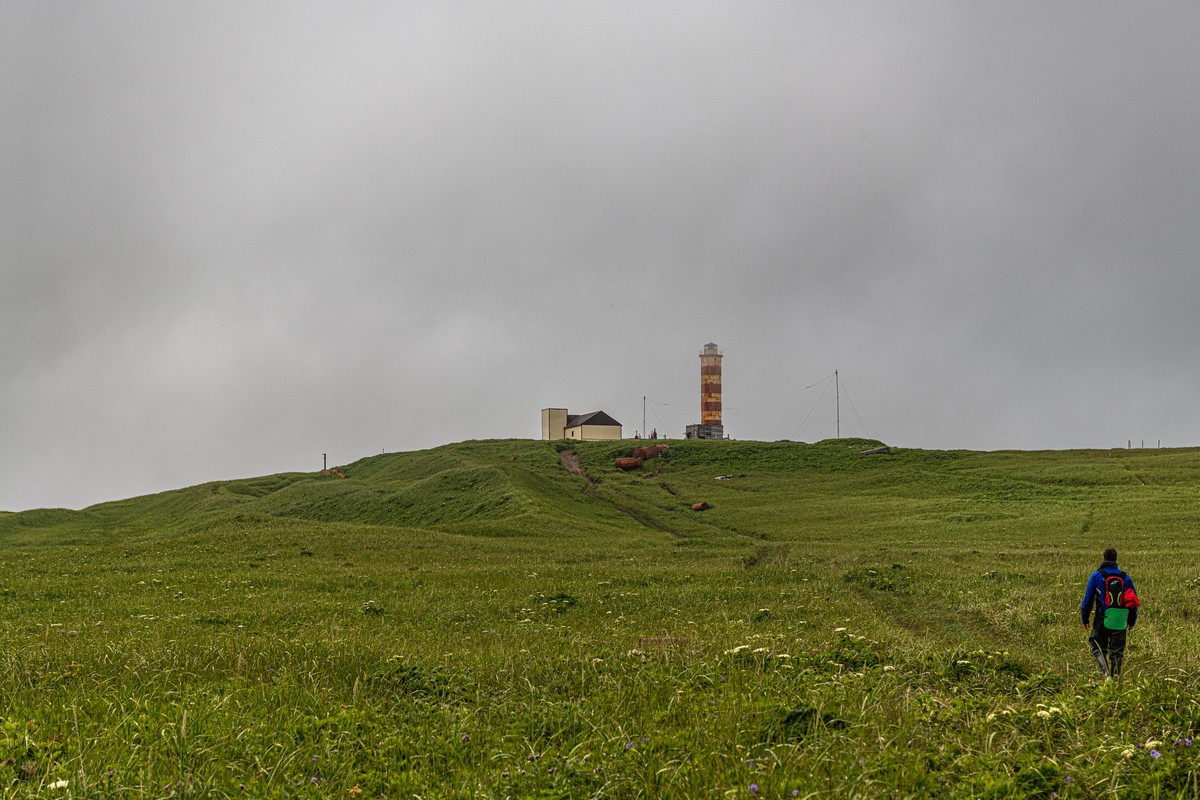
// Btw – in this post (and I’m sure in upcoming ones) the photos are mine and DZ’s. Here, they’re DZ’s only, since I missed this climb due to a capsized boat incident in the Pacific Ocean…
Old abandoned military defenses. The history of the place is unusual… ->
One morning the sunrise – on Krenitsyn – was spectacular. No Photoshop here! ->

Plenty of sea lions /seals…
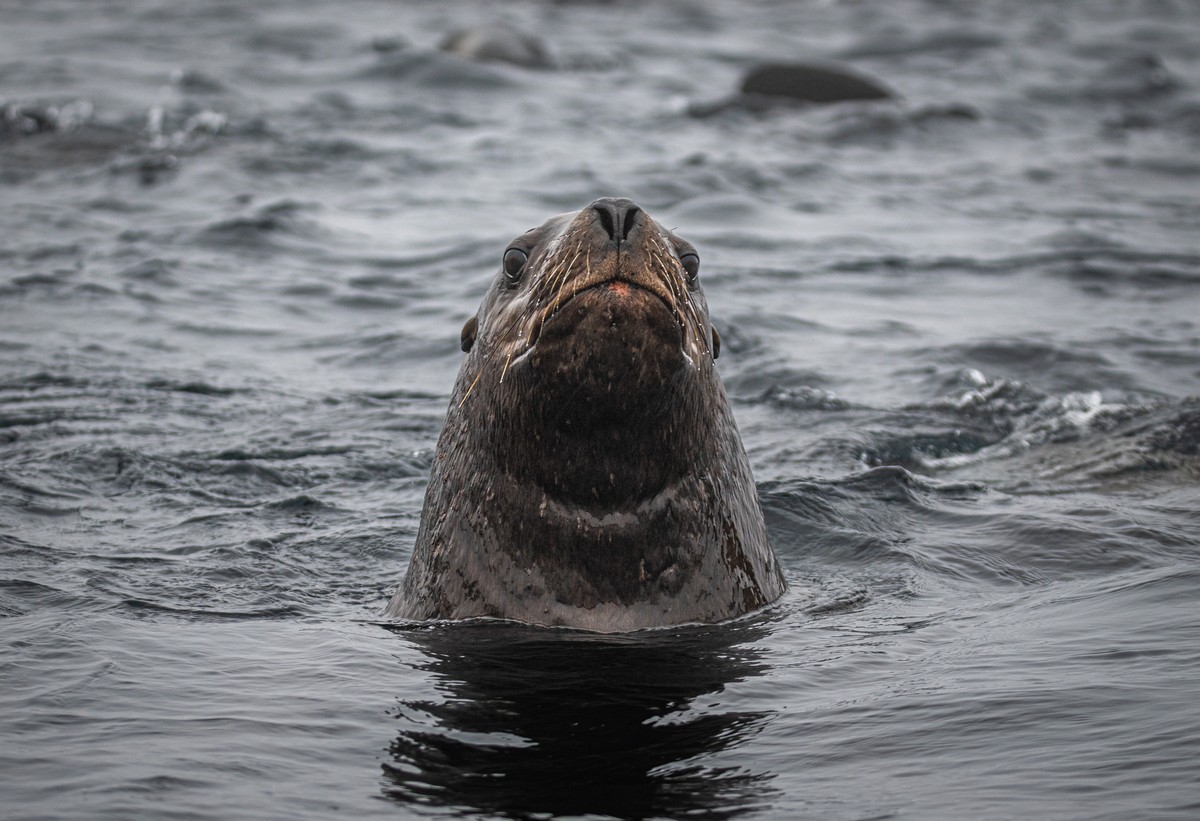
Tyuleny Island, near Sakhalin:
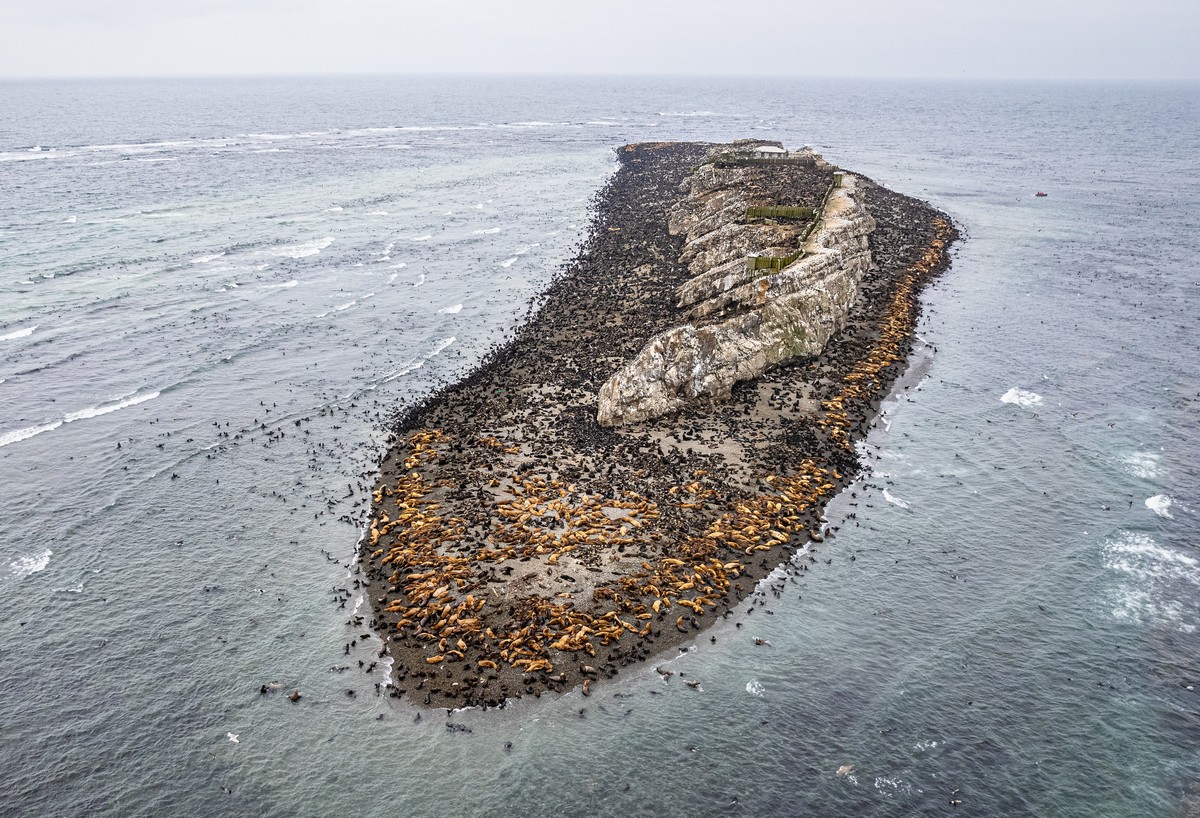
A right racket, much… sex, and a stench that can make you vomit – night and day…
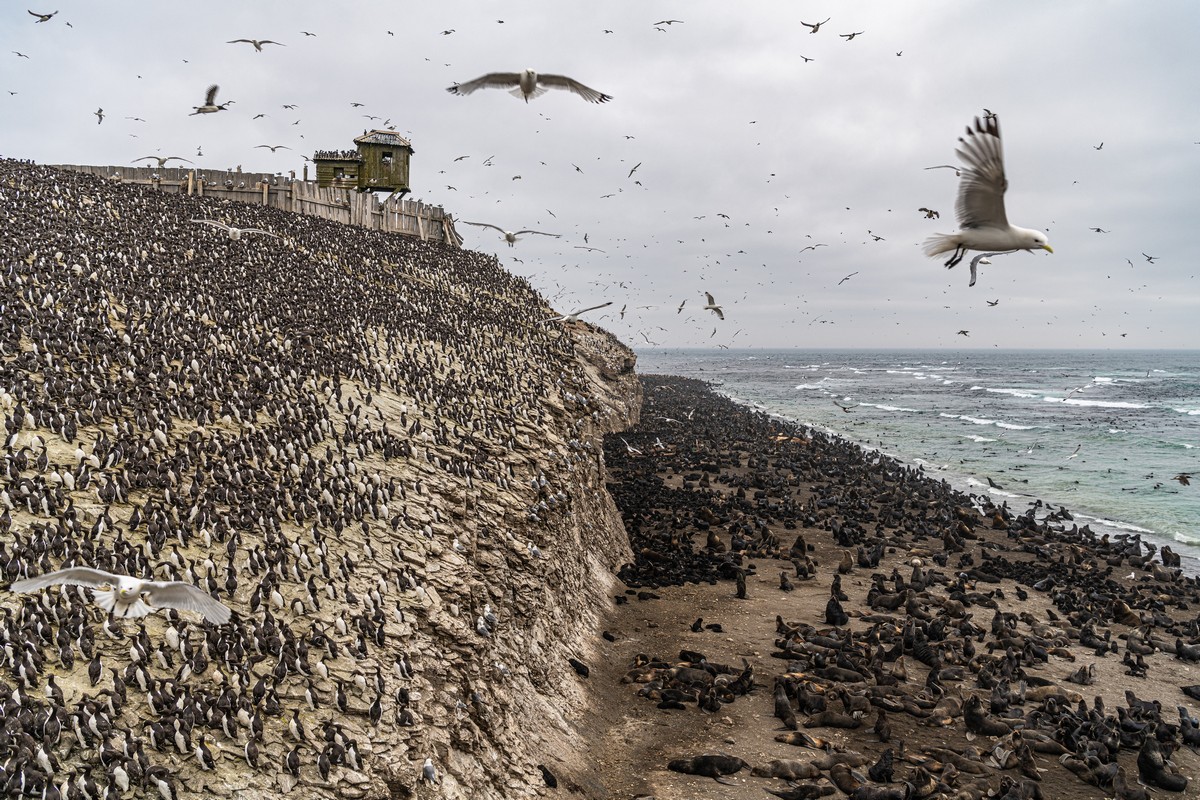
A very rare red-footed booby! Their blue-footed cousins can be found on the Galapagos:

Ushishir in the fog – what a let-down. No point climbing it in this weather…
Aniva lighthouse, Sakhalin. Also in the fog…

The Shantar Islands – also in fog (and rain) ->
And here’s our route:
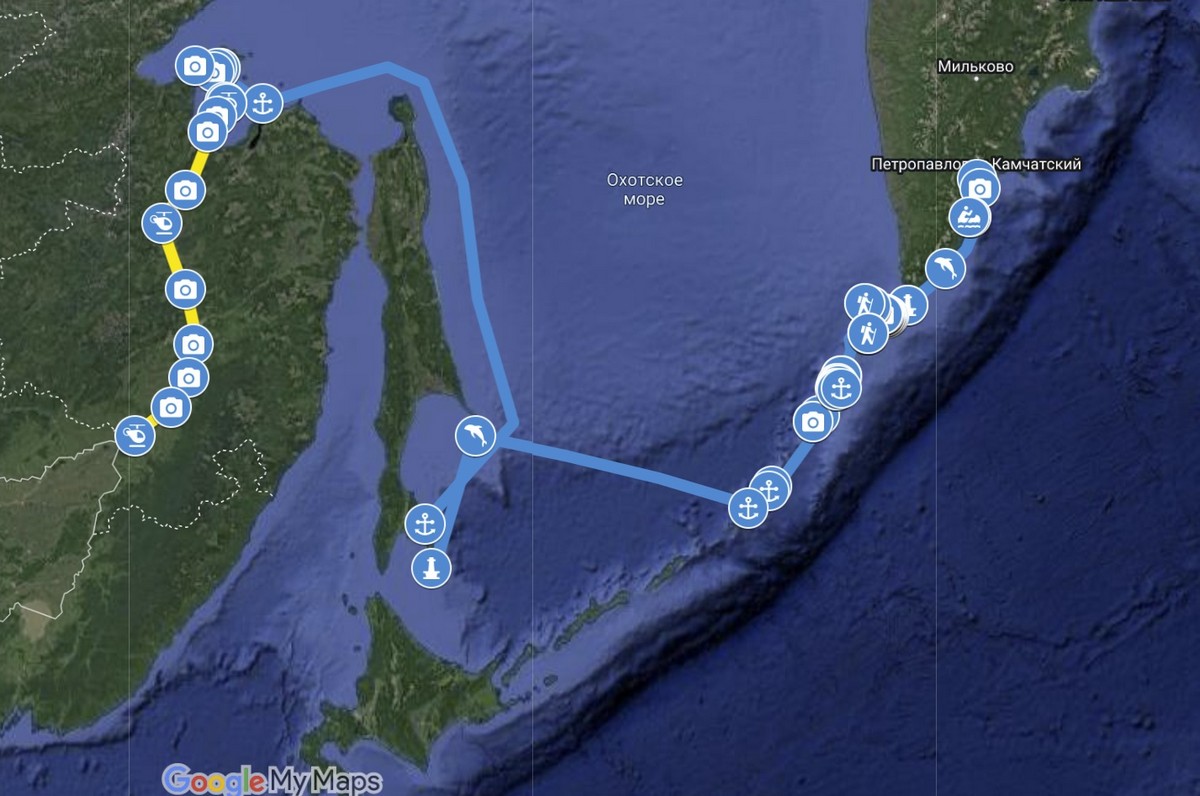
(Click here for a detailed interactive map with more detail)
That’s all for today folks. Back soon!…
The rest of the photos from the Kurils-2022 expedition are here.
